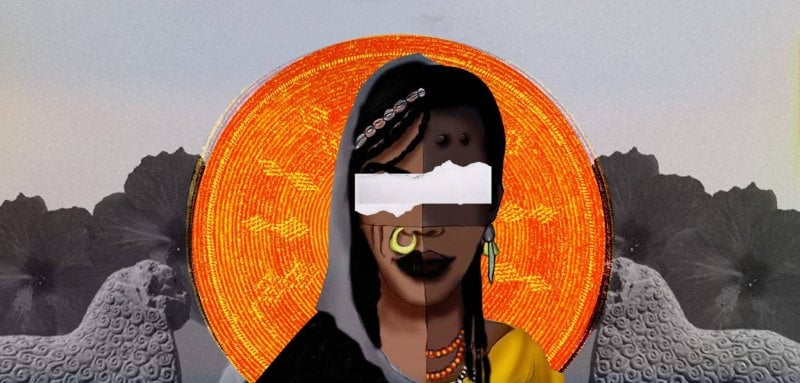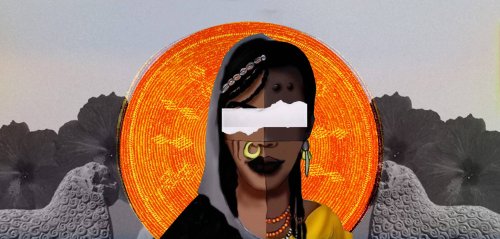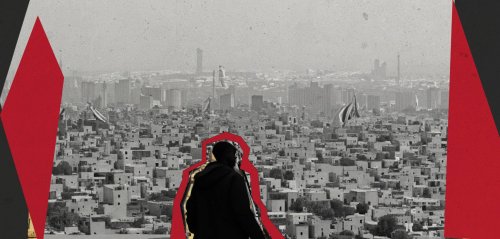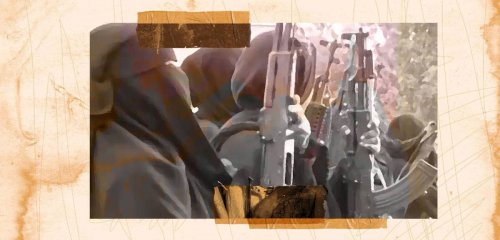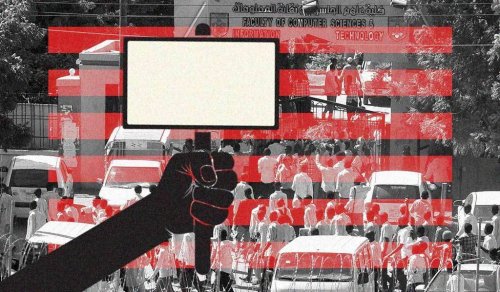I recently found a photograph of me as a baby, and on the back, scribbled in my father’s handwriting, the words: “Our daughter is blue.” He had intended to send it to his siblings in Sudan with one of the pilgrims returning from Mecca, along with a letter announcing the arrival of his new “blue” baby girl.
When it comes to describing skin color, the people of Sudan have different terms for about fifty shades of black. But ironically, Sudanese people hardly ever use the term “black” to describe skin color!
A person is born either white or black, with some differences and variations. Certain privileges are attached to the former, and complications to the latter. Black Arabs still have lower levels of citizenship in various Gulf and Levantine countries, stigmatized as the product of ancient African migrations or descendants of the servants and slaves.
The people of Sudan, an African country with diverse tribes and mixed races, are considered black in the eyes of the world. In the dictionary, its name became the plural of the word black in Arabic ('aswad'). Ironically though, Sudanese people hardly ever use the term black to describe skin color!
They only refer to eggplants as black, so a Sudanese version of babaghanoush is known as ‘black salad’. As for skin color, the people of Sudan have fifty shades of black.
I owe my love of my skin color to my parents. One day, I came home from school, crying after a “yellow” Saudi classmate called me ‘abda’. My mother reassured me, leading to me believe that the little girl was jealous of my academic excellence, of my beautiful eyes, my thin eyebrows and my long hair
An extremely fair-skinned Sudanese person is referred to as “red” – a reference to the reddish hue sometimes present in those with extremely fair skin. Sometimes, they are also called “Halabi”, descendents of Syrian communities that migrated to Sudan in ancient times. The description is general even if origin differs and includes Sudanese people of Egyptian descent, as well as those with dark hair.
And then there's “yellow” Sudanese, not to be mistaken as a sign of jaundice! This label refers to those whose whiteness has a tinge of yellow; this is the predominant skin tone of the people of the Gulf. This color carries the global privileges associated with white skin, and conforms with Western beauty notions, but, in comparison to the “Halabis”, “yellow” Sudanese are considered of purer Sudanese origin.
There is also “wine” or “wheat” color, the fairest shades of brown skin.
As melanin increases, a person’s skin color is referred to as “green.” In my country, “green” skin is not only the color of aliens and plants. You often hear the quip, “her greenness is refreshing,” meaning that her dark skin is radiant, like a ripe fruit.
And then, there’s the “blue” Sudanese, who, unlike the Smurfs, are not blue, but rather, midnight black, like Vincent van Gogh's night sky with its blue hues. In Sudan, as in much of the rest of the world, those with “blue” skin are subject to certain privileges, but also discrimination and racism.
I see beyond what every matchmaker sees. Or what my university professor, who insisted on calling me “Chocolate” instead of my actual name. I reluctantly smiled and reminded him of my name each time.
I've often heard a “blue” person be called “abed”, Arabic for “slave”, a crude term akin to the n-word for Americans. I also hear hushed comments questioning a “blue” person's Arab ethnicity, analyzing the shape of their nose, how curly their hair is, features that some Sudanese consider accurate racial genetic tests.
Some trace “blue” Sudanese people to specific tribes and neighboring African countries, in an attempt to prove pure Arabism. Inter-ethnic marriages, or any deviation from societal norms, are rejected, and are subjected to snide and hushed remarks: “How could they marry this Arab girl to that abed?”
Sudanese society clings to Arabism and to the alleged lineage of ancient Arab caliphs. Asking a Sudanese person about tribe is a common societal benchmark, and it’s unsurprising for an educated young man to seek a bride with no attributes other than for being “white with long hair.” Subjected to harsh and unrealistic Western beauty standards, some girls resort to using cortisone drugs, which among its effects reduces melanin secretion and causes water retention in the body, making them appear “refreshing.” Skin whitening and exfoliating products are considered necessities for most girls of marriage age.
Both my parents are considered fair-skinned, my eldest brother is wheat-colored, and my sister is yellow. However I came as a deviation from all expectations and genetics. I am “green”, or, as my father put it in his unsent note, “blue.”
I do not claim to fully understand the prejudice and racism that “blue” Sudanese have faced over the years, but my experience, as a dark minority in a Gulf country, or as a “green” child to “yellow” parents, has given me a vision and conviction that I hope will help overcome unproductive stigmas.
I owe my love of my skin color to my parents, and that I hate using the beauty filters prevalent on social media platforms.
One day, I came home from school with a top-grade monthly report card in hand, crying because my “yellow” Saudi classmate called me “abda” on our way out of school.
My mother consoled me, assuring me that the little girl was jealous of my academic excellence, of my beautiful eyes, my thin eyebrows and my long hair.
I grew up believing I was beautiful. I cherished my hair and never cut it. I see my eyes as beautiful, despite never hearing this compliment from anyone other than my mother. I have kept my eyebrows thin by continually shaping them, and I refuse to use whitening products, ignoring the suggestions of my female relatives.
So I see beyond what every matchmaker sees. Or what my university professor, who insisted on calling me “Chocolate” instead of my actual name (I reluctantly smiled and reminded him of my name each time), or what a lady passerby in Egypt once affectionately said to me, “but you all have a white and beautiful heart”, implying that this might compensate for our dark skin.
I believe that we are all more comprehensive and deeper than the concentration of melanin in our skin, and that it should not determine our inferiority or privilege under any circumstances.
We are all deeper than the concentration of melanin in our skin, and that it should not determine our privilege or our inferiority under any circumstances.
I do not claim to fully understand the harsh prejudice and racial classification that the “blue” Sudanese have faced over the years, but my experience, as a dark minority in a Gulf country, or as a “green” child to “yellow” parents, has given me a vision and conviction that I hope will help overcome unproductive stigmas.
And I hope, after we recover from this war, that we cleanse ourselves from the legacy of racial and tribal privileges that the previous regime promoted, permitting the extermination of tribes in western and southern Sudan. Sometimes I feel that Khartoum is being rewarded for its silence about the events in Darfur, with the world watching on silently.
* The views and opinions expressed in this article are those of the author’s and do not necessarily reflect the official policy or position of Raseef22
Raseef22 is a not for profit entity. Our focus is on quality journalism. Every contribution to the NasRaseef membership goes directly towards journalism production. We stand independent, not accepting corporate sponsorships, sponsored content or political funding.
Support our mission to keep Raseef22 available to all readers by clicking here!
Interested in writing with us? Check our pitch process here!
